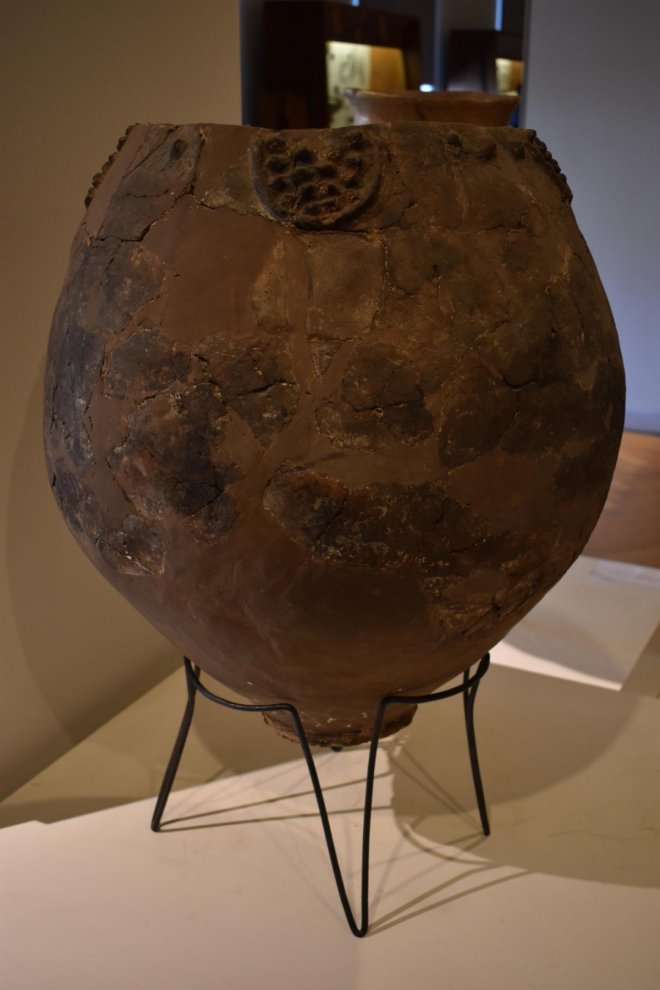
Excavations in the Republic of Georgia have found the evidence of earliest wine-making in the world. The excavators have found the wine-making pottery which dated back to 6000 BC from the archeological site Gadachrili Gora and Shulaveris Gora, at a distance of 50 Km from Tbilisi, the capital of Georgia.
The eight large pottery jars excavated from here contained tartaric acid, the fingerprint compound for grape and wine as well as other organic acids like malic, succinic and citric acids. The researchers from the Gora Regional Archaeological Project Expedition (GRAPE), a joint undertaking of the University of Toronto (U of T) and the Georgian National Museum made the discovery.
The new evidence from the research, which was presented at the Proceeding of the National Academy of Sciences (PNAS), has rewritten the previously approved date of 5400- 5000 BC as the starting point of wine-making to around 600- 1000 years backward. Researchers now believe that the practice had begun hundreds of years earlier in the South Caucasus region on the border of Eastern Europe and Western Asia.
The researchers at the University of Pennsylvania had analyzed the pottery fragments of the excavated ceramic jars to track the age of the wine residues.
Stephen Batiuk, a senior research associate in the Department of Near and Middle Eastern Civilizations and the Archeological Centre at U of T and co-author the studies said, "We believe this is the oldest example of the domestication of a wild-growing Eurasian grapevine solely for the production of wine. The domesticated version of the fruit has more than 10,000 varieties of table and wine grapes worldwide."
He also added that Georgia is home to over 500 varieties for wine alone, suggesting that grapes have been domesticated and cross-bred in the region for a long time.
The researchers say that the Wine had great importance for centuries as a medicine, social lubricant, and mind-altering substance. It became a highly valued commodity which became the focus of religious cults, pharmacopeias, cuisines, economics, and society throughout the ancient Near East.
The site excavated by the U of T and Georgian National Museum team were remnants of two villages from the Neolithic age.
The Neolithic period began around 15,200 BC in the Middle East and ended between 4500 and 2000 BC in other parts of the world. This period was marked for the beginning of farming activities, domestication of animals, development of crafts such as pottery and weaving as well for using polished stone tools.
The researchers said that the Neolithic package of agriculture activity, tool-making, and crafts that developed in the regions like modern Iraq, Syria, and Turkey was introduced in different regions which have different climates and plant life. Development and domestication of new species helped in the emergence of new varieties of wine drinks.
Stephen Batiuk said, "The infinite range of flavors and aromas of today's 8,000-10,000 grape varieties are the end result of the domesticated Eurasian grapevine being transplanted and crossed with wild grapevines elsewhere over and over again. The Eurasian grapevine that now accounts for 99.9 percent of the wine made in the world today, has its roots in Caucasia."








